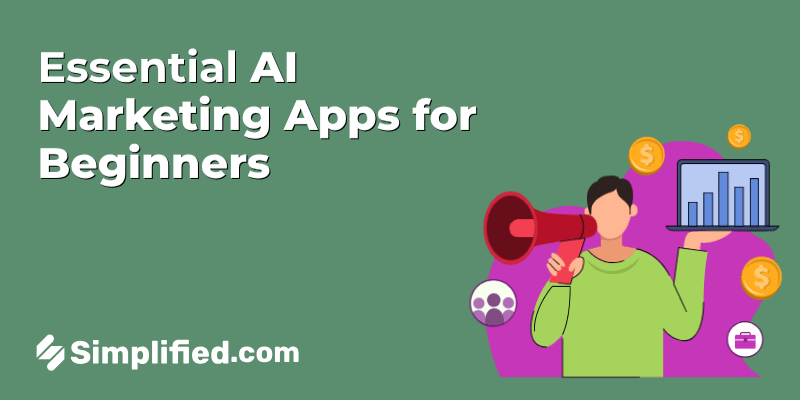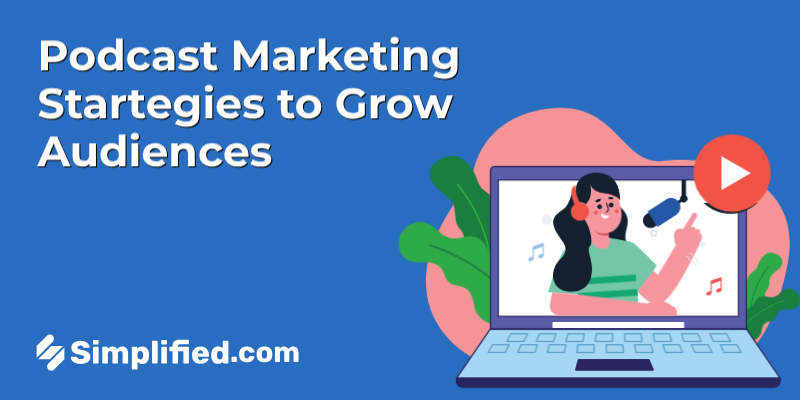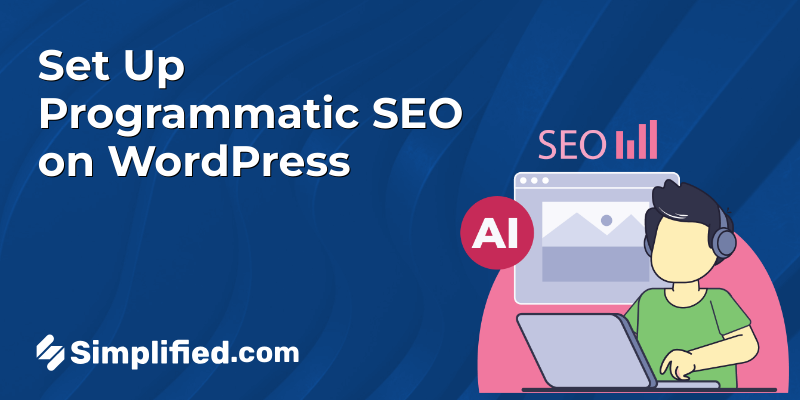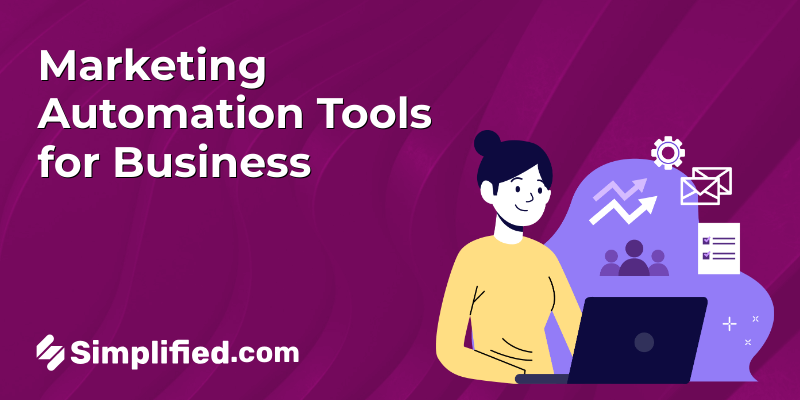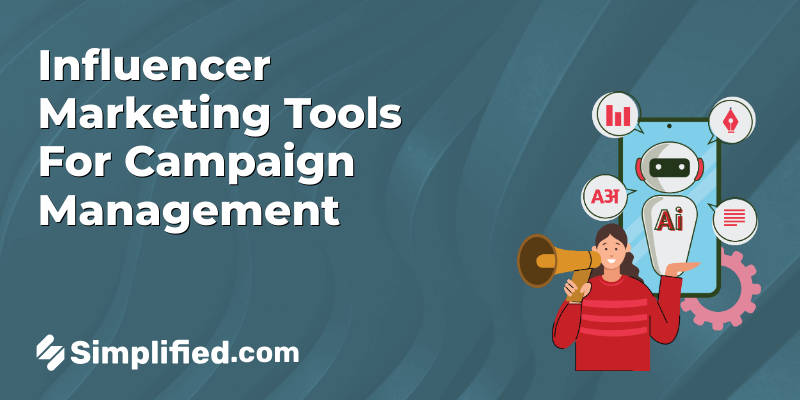
Are you looking to create a killer sales strategy presentation? Whether you’re pitching a product, service, or idea, the success of your presentation relies heavily on the content you present and how you deliver it.
A well-crafted sales strategy presentation can make all the difference in securing a new client, closing a deal, or even gaining support from your team. In this blog, we’ll show you 7 key elements to include in your sales strategy presentation for the best results!
What is a Sales Strategy Presentation?
First, a sales strategy is a plan or approach a business develops to sell a product or service. It ideally aligns with the overall business marketing strategy and outlines the target clients and the business value proposition, among others.
So, what should a sales strategy include? It should typically answer the following questions:
- Who is your target audience?
- What product or service will you sell to them?
- How will you sell it to them?
- What messaging will you use to market and sell your offering?
- What are your top sales priorities?
- What are the specific goals that your team will work towards?
On the other hand, a sales strategy presentation is used to ensure everyone in your company is on the same page about sales goals and strategies. It should lay out your plan for reaching your target market and winning over new customers.


7 Elements that’ll Help You Make the Best Strategy Presentations
In no particular order, here are 7 important elements you should include in your sales strategy presentations:
1. A Clear Market Strategy
The first element is a clear market strategy. This entails planning how to acquire new, profitable customers by considering areas like:
- how to grow existing accounts
- revenue from existing/new products
- up-selling, etc.
Examples include cold calling, flash sales, and social media marketing.
Consider your customer and product mix, seasonal sales cycles, and pricing strategies to win over new customers. Make sure you have a plan of how to bring prices and margins back up to profitability, or you’ll have to settle for reduced margins.
2. Reaching the Customer and Target Market
Second, identify the channels and methods you will use to reach your ideal customer. You should decide whether you’d like to sell directly or through other channels.
Compare the costs and benefits of each option, and make sure you have a good plan in place to guide customers through the sales process.
And to better understand customer preferences and optimize your sales approach you can consider integrating quiz-making tools or a WordPress quiz plugin into your website for a more personalized and engaging experience for potential buyers.
3. Required Sales Resources
A good sales strategy isn’t just about selling – it’s also about figuring out what resources you need to make sales happen. This means planning out training, improving the customer experience, and getting any specialist support you need. In some cases, an AI sales agent can also be part of the mix. It can handle tasks like answering common questions, qualifying leads, or booking meetings, so your team can focus on the conversations that matter most.
Don’t forget to plan out your marketing and sales assets too, so that everything’s ready when you launch your sales strategy.
4. Sales Planning, Forecasting, and Budgeting
Next, your sales strategy presentation should show how much you expect to sell each month, broken down by customer and product. To make these predictions, take a look at past sales data or use your business plan as a guide. Using project forecasting software can further enhance accuracy by analyzing historical trends and real-time market data to predict future sales performance.
Also, consider things like how long it takes customers to make a purchase and how marketing and pricing can affect sales.


5. Measuring Sales Performance
Your sales strategy presentation should include how you’ll measure your sales performance against your sales plan. Look at areas such as forecasting accuracy, cost of sales, time and money spent on customers, customer segments, win/loss ratio, and cost per customer sale.
There are a lot of factors that impact sales success, so it’s important to set clear goals and tactics to meet and exceed your target.
6. Lead Generation Channels
These are the different ways that you can find potential customers who might be interested in buying your product or service. Examples include social media advertising, SEO, email marketing campaigns, or referrals from existing customers.
Additionally, lead generation software can help automate and optimize these processes, making it easier to identify and engage with potential leads.
By pinpointing the most effective lead generation channels, you can focus your sales strategy on reaching the right people in the right places.
7. Sales Team and the Roles and Responsibilities of Each Member
Finally, giving an overview of your sales team is another critical element to include in your sales strategy presentation. You’ll need to outline who is on your sales team and what their specific roles and responsibilities are.
For example, one team member may be responsible for lead generation, while another may handle closing deals. By outlining these roles and responsibilities, you’ll ensure everyone is on the same page and working together to achieve your sales goals.
Bonus: 4 Evergreen Sales Pitch Examples[ + Free Script Generator]
Create Top-Notch Sales Strategy Presentations Using Simplified
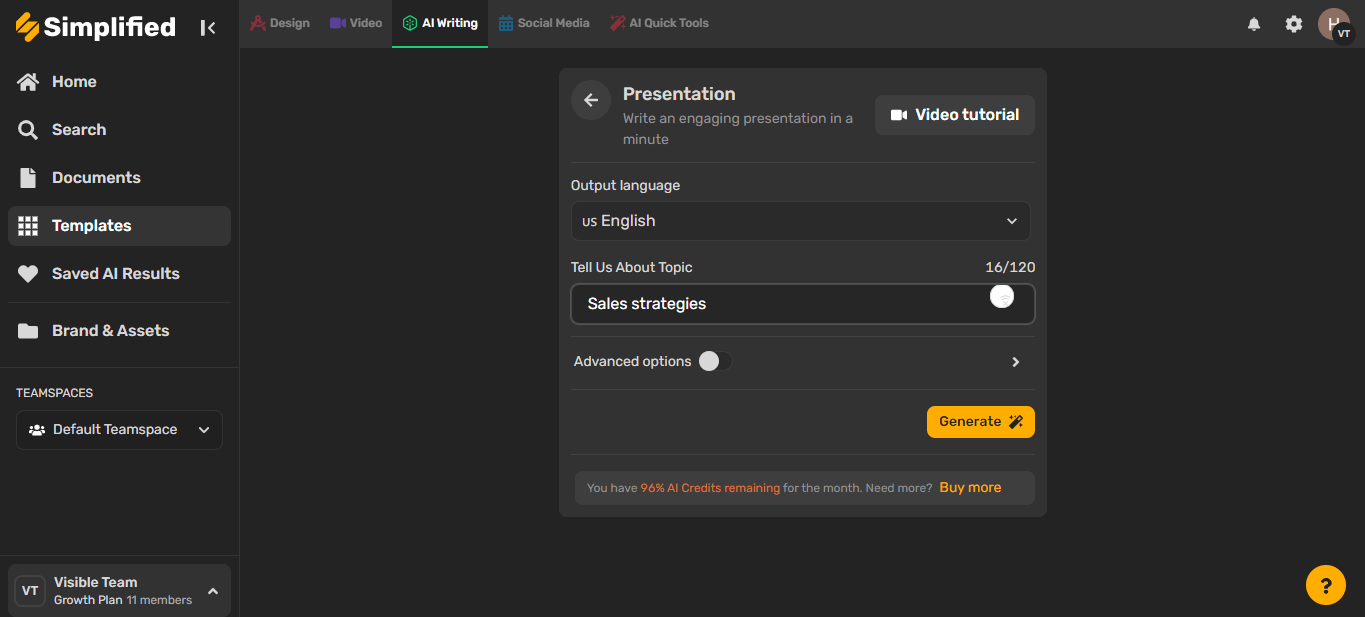
Looking for an easy and efficient way to create the best sales strategy presentations? Let’s help you out! Our AI Presentation Maker will help you ideate and automatically design AI-generated presentations in seconds, allowing you to impress customers, close deals, and simplify your sales process.
With Simplified, you can choose from a variety of professionally-designed presentation templates to kick things off quickly. Our AI Presentation Maker will then automatically generate a unique and customizable presentation. All that’s left is for you and your team to collaborate and make it even better.
From the font, text, color, images, and sounds, you have all the power to create amazing designs while saving time and effort. Plus, with our preview feature, you can even present or share your presentation with company stakeholders!
Whether you’re creating a sales proposal, sales meeting, or product demo, Simplified’s AI Presentation Maker is the perfect tool to help you create a winning sales strategy presentation effortlessly.
Sign up today to get started!


